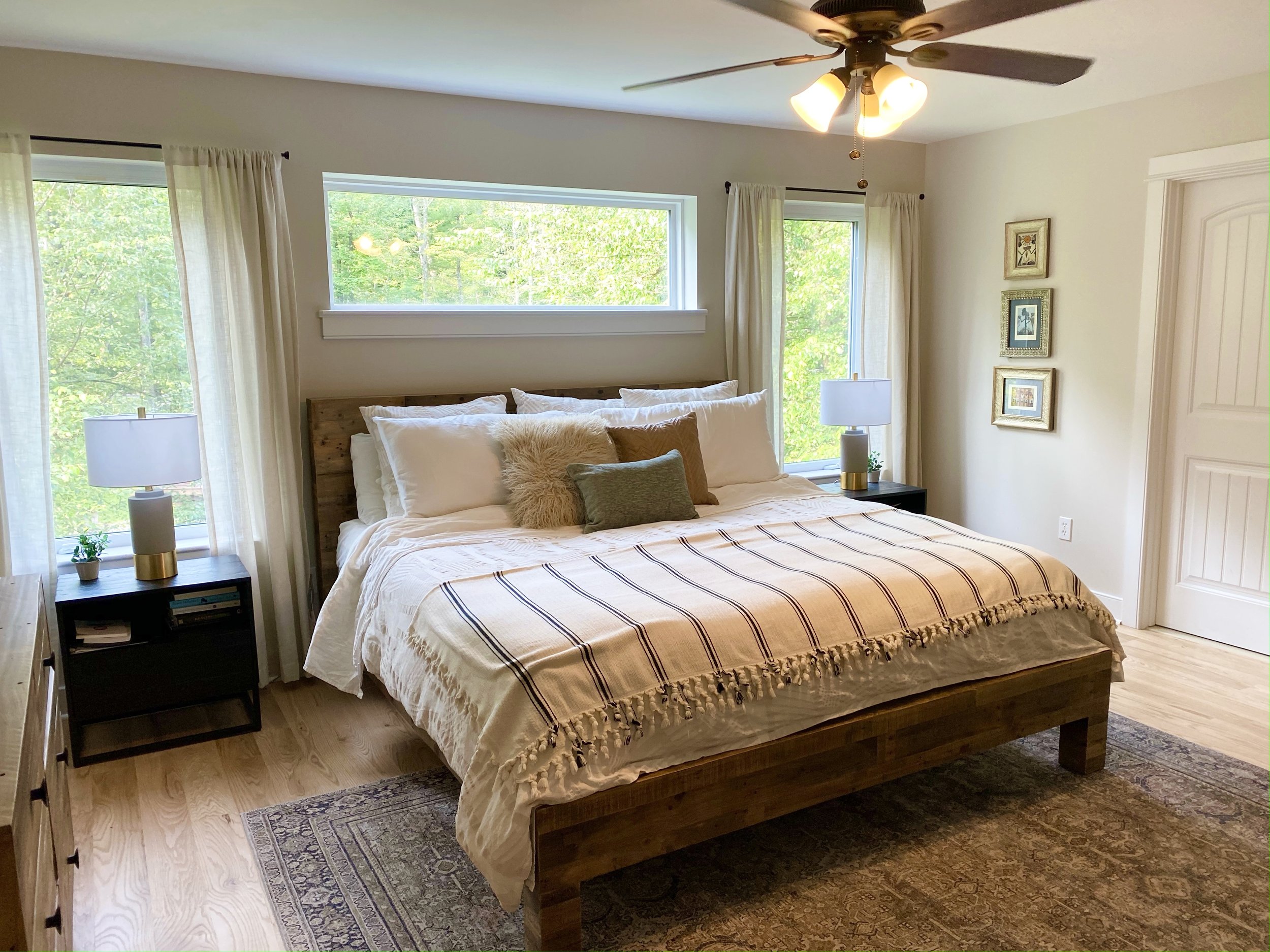Interior Design Consulting
meet april, our in-house interior designer
April began interior design long before she had words for it. At four years old, playing legos with her aunt, she would build houses and leave the roofs off so she could decorate the rooms. She would draw aerial views of rooms to decorate. That was “play.” Even with Barbies, it wasn’t their clothes that mattered to her—she was looking around her house for things to give Barbie a bedroom.
But this was play—it wasn’t a job. At least not a job she knew she could have.
She minored in art history and loved it, almost switching her major, before she was convinced to try something more “practical.” And she did love biology and healing, so she enjoyed her psychology major, then her masters in counseling and psychology, ultimately working as an LMHC at Staten Island Mental Health Society and then in private practice for almost 20 years.
All the while, though, she was designing her own spaces. “I had this impression that to hire a designer you had to have a lot of money,” April said. But all the while, visitors to her homes would gush about her decor. They felt inspired by her design, and they began asking for her help. “I can’t even count how many projects I helped my friends with over the years,” she laughs.
“People often know what they don’t like, but not what they like. So it’s a discovery process. As we find what they like together, it helps them understand and get to know more of who they are, and it gives them courage to maybe try something they wouldn’t have done before.”
She takes a relational approach, very informed by her psychological background. Seeing how people dress and what styles they tend to like, she gleans a lot more information than they tell her. She is often told, “I had no idea what was missing until you came in and added a tree, or a carpet.” She believes really simple things can transform a space, and it doesn’t have to break the bank.
“I want it to be accessible,” April told us. “Everyone deserves to live in beautiful spaces.”
“It’s a really relational process. If you don’t like it and you’re living there, what’s the point? Not everyone has gotten to experience “home” as their safe place… as a place they want to go back to. So when you . . . start to have your own spaces, you want that to be a place that brings you joy. A place you want to be. We deserve that safety. It’s not about the stuff, it’s about the feeling.” —April Niesi







